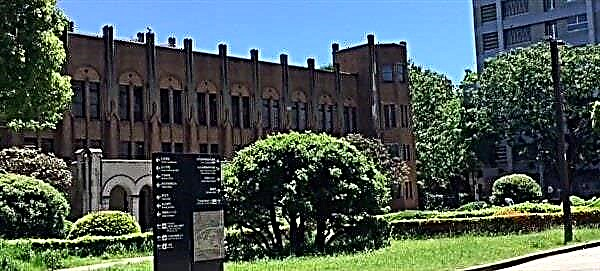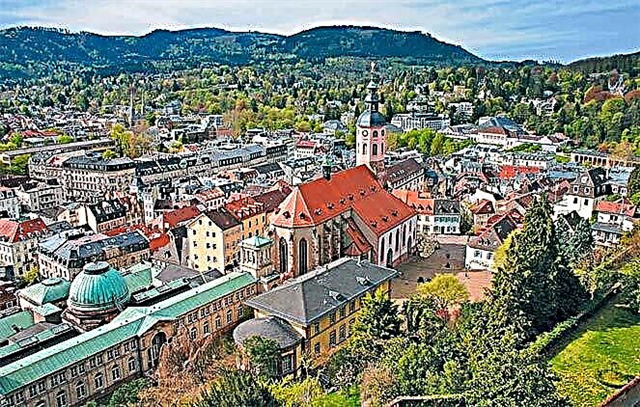The Czech Republic is located in the continental part of Europe, therefore its climate is temperate, continental-oceanic. Depending on the movement of air masses, both hot dry and cold wet weather can be observed here at any time of the year. If you do not take into account the climate of the country's mountainous terrain, then on the plains the temperature difference in the regions is insignificant and is only 2 degrees. To decide when to travel, you should know what the weather and climate are in the Czech Republic by month.

Features of the Czech climate
The coldest regions of the Czech Republic of the country are in its northern part, if you do not take into account the densely populated Ostrava, located at the confluence of three large rivers. Opposite is the western part of the Czech Republic, which includes Morava, Karlovy Vary Region, central Strakonice and the regions near the Labe River are considered warm.
A zone of temperate climate runs through the capital of the Czech Republic - Prague, through the municipality of the Pilsen region to the southern city of Domazlice.
It is on the territory of the Czech Republic that the maritime climate turns into a continental one, therefore, moderate weather is observed throughout the flat part of the country, regardless of the season.
There is no sweltering heat in the Czech Republic, since the average summer temperature fluctuates around +19 ° C (in the mountains, this figure can drop to +5 ° C). In winter, they also rarely reach extremes: a temperature of -4 ° C is considered normal, and -10 ° C is only possible on higher elevations.
Please note that there is significant rainfall in April and October, and there can be significant fluctuations between night and day temperatures. The Czech website http://www.respublika.cz/pogoda-v-chekhii can provide up-to-date information on the weather.
Climate by region
The Czech Republic is located in the most favorable climatic zone of the temperate zone of the Northern Hemisphere. This country is divided into seven regions: Prague, central, southern, northern, western, eastern regions and North Moravia:
- The metropolitan region and the central lands are located in a zone of temperate continental climate. Prague, Kutná Hora, Pribram, Podebrady, Teplice, Mlada Boleslav are located here. Being in the “Bohemian cauldron”, which consists of hills, the region is protected from unfavorable climatic conditions, therefore, most of the time it is warm, dry, there are no natural disasters.
- The southern and western regions are considered the cleanest, have a rich nature, it is here that the famous Machovo Lake is located, the water temperature in which reaches +28 ° C in summer.
The local climate is close to the pronounced continental one, as the average annual temperature is kept within + 10 ... + 12 ° C. Abundant precipitation occurs here in late autumn and early spring, snow rarely falls and melts almost immediately. South Bohemia is represented by the cities of Ceske Budejovice, Cesky Krumlov, Brno, Zlin. Western lands include Karlovy Vary, Domažlice, Pilsen. - The northern and eastern lands are distinguished by low average annual temperatures, as they are located in places where the continental-oceanic climate dominates. The temperature amplitudes are insignificant here, the relative humidity is always high, and there are few sunny days due to the intense cyclonic activity. The average annual temperature reaches +7 ° C, the predominant amount of precipitation falls in winter and spring. Pardubice, Hradec Kralove, Olomouc, Chomutov and Liberec are located on these lands.
- The region of Vysočina stands out in a separate category, as it is located in the southern part of the country, while having a special mountain climate. This type of climate is characterized by low temperatures throughout the year, significant fluctuations, which depend on the time of day, low atmospheric pressure and high humidity. Mountain-valley winds prevail in Havlíčków Brod, Jihlava, Třebíč.
- North Moravia, known as the Moravian – Silesian Region, lies in the east of the country. It is famous for its resorts and mild continental climate. Every year a large number of tourists come to Ostrava-Gorod, Bruntal and Karvin for health improvement and climatotherapy. The average annual temperature is about + 10 ° C, precipitation is moderate, winters are stable frosty with a cooling down to -4 ° C, and summers are almost never hot.
Spring weather
The seasonality in the Czech Republic is quite pronounced, therefore, spring in the lowland regions begins in March. The average daily temperature rises to +3 ° C. There are cold snaps down to -5 ° C, but they occur mainly at night, during the day the temperature is kept at +7.
Relative humidity is about 80%, there is practically no precipitation (only 15 mm), and daylight hours are up to 12 hours.

At the same time, the season with stable snow cover and frosts continues in the ski resorts, and the heat in the mountainous region begins only by the end of the month.
In April, real spring comes to the Czech Republic: in the afternoon the air warms up to +15 ° C in the southwestern and up to +11 ° C in the northeastern lands. The average daily temperature at this time is +7 ° C and +5 ° C, respectively.
Precipitation rises to 35 mm and the average relative humidity drops to 65% across the country.
The duration of daylight hours is increasing: in April, the time of sunset shifts to 20:00, which means that the sun is in the sky for 14 hours. Strong April winds can disrupt walking plans, so dress warmly.
May is a particularly beautiful time in the Czech Republic, since the trees have already blossomed, but the summer heat is still not making itself felt, so the May holidays are held with special solemnity.
With an average daily temperature of +13 ° C during the day, the air warms up to +18 ° C, and at night it rarely cools below +8 ° C, regardless of the region. There is even more precipitation than in April (especially in mountainous regions) - as much as 55 mm, but the number of sunny days is 16 per month. The sun is in the sky for more than 16 hours - it is during this period that the high tourist season begins in the country.
Strong winds with a speed of up to 12 km / h are observed in the flat central and southern lands.
Summer weather
In June, the average daily temperature is 18 ° C, while during the day it rises to +22 ° C. Since the ground is still cold, the air cools down to +14 ° C at night. It rains often, but after them the sun invariably peeps out, therefore there is a high humidity - 75% and a large amount of precipitation - 60 mm.
The sun rises at 04:50 in June and sets at 21:13 - and many tourists stay late at the various celebrations that this season is rich in. In mountainous areas, the average daily temperature is slightly lower - 15 ° C, as it gets colder there at night (the temperature drops to +14 ° C), and during the day the air does not have time to warm up enough.
In July, a gradual warming up to +25 ° C during the day and +18 ° C at night should be expected. On the plains (central, southern regions), precipitation is still abundant - at least 60 mm, and in the mountains, their amount decreases to about 40 mm / month, as well as the relative humidity (65%).

Daylight hours begin to slowly decrease, despite the fact that sunset still comes after 21:00. Wind gusts in central regions reach 18 km / h, but this wind is usually warm.
In August, moderate warmth and minimum humidity (65%) come to the Czech Republic, the days are mostly sunny. Average daily temperatures are kept at +21 ° C, while during the day it can be up to +24 ° C, and at night - up to + 18 ° C.
The amount of precipitation is reduced to 50 mm, and the daylight hours are reduced to 15 hours: now the sun sets at about 20:00.The wind moves from flat terrain to mountainous regions, here it reduces its intensity to 14 km / h.
Autumn weather
The first autumn month - September - pleases with moderate warmth, fresh nighttime coolness and little rainfall. In September, the average daily temperature gradually drops to + 15 ° C, with a daytime warmth of + 20 ° C and a cool night temperature of + 10 ° C.

Rains during this period are rare, so there is little precipitation - only 30 mm, but the relative humidity rises throughout the country due to the air masses passing through the mainland from the ocean. With the beginning of autumn, the sun sets at about 19:00, and the wind speed increases in the south-west of the country to 17 km / h.
In October, the weather in the Czech Republic is conducive to walking: it is still the same dry and mild, while there are much fewer tourists.
The average daytime temperature drops to +16 ° C, and at night - to +9 ° C, the amount of precipitation remains small - only 25 mm.
It gets colder in the central and southern regions later than in the east and in the mountains, where average daily temperatures drop to +9 ° C. The relative humidity rises to 85% - a sign of the presence of Mediterranean air masses in the Czech lands.
The weather becomes colder and damp in the Czech Republic in early November: it is better to refuse from night walks at this time, since at night the temperature often drops to +5 ° C.
During the day, sudden cold showers and gusts of wind up to 20 km / h are possible, the humidity is kept at 80%, regardless of the region of the country. The number of sunny days is reduced to 6–7 per month, so the daytime air temperature rarely exceeds + 10 ° C.
The duration of daylight hours during this period is 9.5 hours. During this period, the Czech Republic begins to prepare for the winter holidays, so it is recommended to walk around it warmly dressed.
Winter weather
On average, the daytime temperature in the central and southern regions in December is kept within +2 ° C, at night it drops to -2 ° C. The mountainous lands in their climate are becoming similar to the Italian resort of Riva del Garda: mild daytime temperatures are replaced by night frosts and rare snow.
High - up to 90% - humidity is accompanied by gusts of wind up to 25 km / h, and the sun, if it appears due to clouds, sets at 16:00, and it starts to get colder outside. The amount of precipitation increases slightly due to snow - up to 30 mm.
In January, the whole country turns into a real winter fairy tale: it is covered with snow, which is kept thanks to the cool weather. The mountainous regions have up to 70 mm of precipitation in the form of snow, the central ones - up to 40 mm.
The relative humidity during this period is high, within 85%, since thaws occur, and the oceanic air masses still dominate. The wind speed reaches 22 km / h, so a slight cold snap may seem more serious. Average temperatures during this period range from -2 ° C during the day to -6 ° C at night.

February weather surprises with its variability: periods of dry continental frosts are replaced by rare wet snow and warming after sea anticyclones. The average daily temperature is approximately at zero, precipitation falls no more than 10 mm when it comes to the central regions.
In the north and east, as well as in the Vysočina region, precipitation is much higher, up to 45 mm, and temperatures are usually lower - about -2 ° C.
Daylight hours during this period become longer: the sun rises at 07:15, and sets at about 17:20, so there is an opportunity to walk longer and enjoy the traditional February festivities.
When is the best time to go to the Czech Republic
It is best to come to rest in the Czech Republic from the end of April to the beginning of November. It was at this time that the country had consistently warm comfortable weather without prolonged rains, and late sunsets allow you to walk until the evening.
If you want to avoid the crowds of tourists, come in the springtime. Keep in mind that in late spring and mid-autumn, thunderstorms can suddenly overtake you.

October-November, as well as March-early April are the best time to visit Czech museums, art galleries, shopping centers.
In winter, it is worth going to the ski resorts of the Czech Republic Harrachov or Spindleruv Mlyn - here the high season lasts from mid-December to the end of February. This time coincides with the New Year holidays, which are accompanied by numerous fairs and festivals.
It is worth noting that in winter, the southern and western regions are often covered with fog, so the humidity rises significantly.
What cataclysms happened in the Czech Republic
Most often, the Czech Republic suffers from floods, because its continental location does not allow such natural phenomena as tsunamis, tornadoes and typhoons to fall on the country:
- 1845 - flooding in the central regions. Prague and the Moravian Land suffered the most: the speed of the water flow in some places was 45 km / h;
- 1890 flood in Prague. The rise in the level of rivers in Northern Italy provoked the expansion of the Vltava River and the subsequent flooding of the "Bohemian cauldron" by a wave at a speed of 39 km / h;
- 1997 - inundation of Moravia and the eastern regions. Over the week, the Czech Republic received a six-month rainfall, which led to a total damage of over 60 billion kroons;
- 2000 - during the early spring, the melting of snows led to the flooding of the territory of almost the entire Czech Republic. The total damage is estimated at 2.5 billion kroons.
- 2006 - melting snow masses filled the riverbeds, led to overflowing the banks of the Morava, Elbe, Die. Of the thirteen regions, seven were badly damaged, the damage from the disaster amounted to more than 20 billion kroons.
- 2021 - due to heavy rains, more than ten sections of the Czech railway system were closed, an emergency regime was declared in the country.
Finally
The geographical position of the Czech Republic determines the minimum fluctuations in average monthly temperatures and comfortable climatic conditions during the high tourist season.
To choose the right time to visit the Czech Republic, decide for what purpose you are going to the country. If you are planning to visit a ski resort, then buy tickets for December-February, and the weather of the spring and summer months is most suitable for sightseeing tours around the cities.











